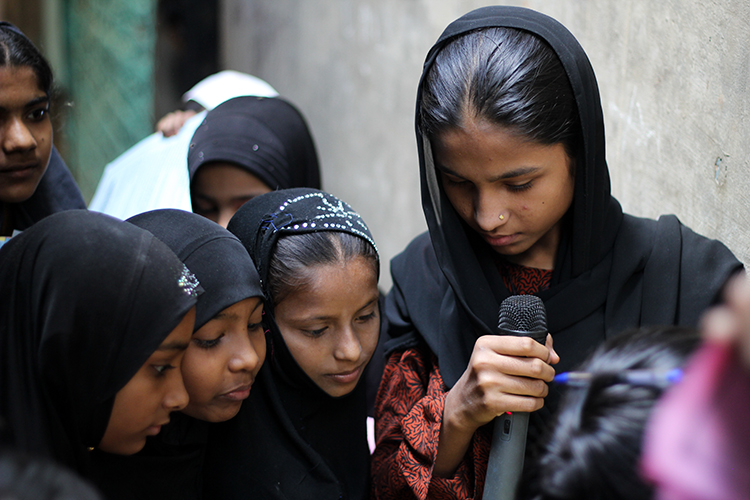Today, much of the social development sector in India appears to be engaged with discussions around scale. The debate is likely to intensify further, as there seems to be little clarity in sight as to what precisely scaling entails, and who may or may not scale.
In fact, what exemplifies the sector at large is the fluidity of meaning even about some of its most routine concerns, like social change, charity, impact, sustainability, and so on.
It is perhaps fair to assume that the debate on social change and scalability is principally being driven by the for-profit sector’s growing engagement with the nonprofit sector. The for-profit sector is by definition a scale sector. When seeking to address social problems, it often looks at market-based or marketable solutions. Its engagement, be it from individual philanthropists, CSR foundations, or social entrepreneurs, is likely to increase the pressure on the nonprofit sector to increasingly recast its work and approach it in the former’s mould.
The argument is that the move will enhance professionalism in nonprofit organisations—evidence-based decision making, a greater focus on tangible returns, rigorous cost analysis, increased accountability to stakeholders (especially donors)—which, in turn, will ultimately translate into greater sustainable impact.1
There is a growing predilection among donors to replace ‘donation for a social cause’ with ‘capital to a social enterprise’, and command a return they can touch and count.
This seems to have convinced the intermediaries as well—entities operating in the space between ‘implementation’ and ‘support’, guiding investors and donors where and how to invest and donate—to advocate for attributes related to the for-profit sector, including scaling.
Consequently, there is a growing predilection among donors to replace ‘donation for a social cause’ with ‘capital to a social enterprise’, and command a return they can touch and count.
This trend is causing stress to many, as people in the space of social change are still trying to get a sense of why, what, how, and how much to scale. To understand the pressure to scale better, let’s unpack ‘social change’.
What does social change entail?
- Sustainable social change typically includes changes at three levels: personal (behaviour and practice), social (values and social relations), and systemic (policy).
- It invariably engages with four elements of everyday life: the individual and her family, the community, the government, and the market.2
A study will help us know how many cases of allegedly successful scaling will actually tick these two boxes. My guess is, not many.
More often than not, sustainable change involving all the stakeholders mentioned above is an inter-generational process. It is difficult to achieve social change in a two-year-project cycle, which is what most of the people with the scale sector lens seem to proffer.
Sustainable change involving all the stakeholders mentioned above is an inter-generational process.
Further, work in the nonprofit sector may be organised under three broad categories: ‘social change’, ‘development’ and, ‘charity for immediate relief’. Just as an illustration, the civil society campaign that resulted in passing of the Right to Education (RTE) Act is an example of social change. It has compelled a reconsideration of social relations. The successful implementation of skilling programmes, resulting in jobs for many young people is an example of development. The distribution of relief material in the wake of a disaster is an example of a charity for immediate relief. It is worth examining how many cases of allegedly successful scaling will fall under which of these categories.
Apnalaya, where I work, has worked in just five geographies of about 22 slums in different parts of Mumbai in its 45-year history. It has exited from four of those five clusters, after making itself redundant.
Did it scale up? The answer perhaps is, no. Did it bring social change in those clusters? The answer, I reckon, is yes.
How does it work? Based on its experience of working with the most marginalised in Mumbai, Apnalaya has developed a two-pronged approach to bring integrated development in an extremely deprived community:
- Mitigate the urgent and the immediate issues. For instance, we run a clinic since the government medical facility in the community is inadequate.
- Enhance people’s capacities to be self-reliant in negotiating their everyday life. This includes, enabling young people to complete schooling and skill themselves to participate in the world of work.
For a sustainable change, Apnalaya, therefore, works on health, education, and livelihoods with a social entitlements lens.
This lens enables people to participate in their development, to undertake the journey of being people to becoming pro-active citizens. It encourages them to emerge as community leaders by becoming volunteers for the upliftment of the community. It is this last aspect, of citizen volunteering, that is Apnalaya’s most ambitious project. This is because it is an approach to scale that is centred on the right of the individual as citizen: the utmost guarantee of sustainability.

A social entitlements lens enables people to participate in their development | Picture courtesy: Apnalaya
In 2018-19, just to illustrate the point above, for 12 slum clusters in Mumbai, Apnalaya developed 177 leaders from 1,175 youth and adults, who graduated from its citizenship programme. These leaders formed Community Action Groups around issues identified and prioritised by the community, and worked with the relevant government departments. They managed to get basic amenities to 3,866 families in the form of potable water, electricity, cooking gas connections, regular garbage disposal, street lights, and a couple of toilet blocks. This was possible because these leaders had learned how to work with the government to avail their social entitlements. For Apnalaya, these are building blocks of its own redundancy
The question we often ask ourselves is: Is social change possible without scaling deep?
The question we often ask ourselves is: Is social change possible without scaling deep?
There is a need to study nonprofits that have scaled up. This would entail examining how many of them have holistic and sustainable change as their mandate and how many have dealt with a single issue and/or product.
We may find that organisations with mono-thematic focus have expanded their work much faster. Organisations just focusing on Severely Acute Malnutrition, for instance, have scaled at a much faster rate than say those working on Malnutrition. Those seeking to improve overall community health are often far behind in the race to scale.
We may also see that relief work and service-provision scale up faster than rights-based work. For instance, programmes that provide food have scaled up rapidly, while those working on food security are not able to match those numbers.
Why? In the ecosystem, there is willing capital for charity (delivering a service, such as running a tuition class for the poor in the neighbourhood). This enthusiasm becomes subdued in the case of programmes whose goal is empowerment (working to ensure that the poor in the neighbourhood have access to the same schools as the non-poor). And there is certainly a strong reluctance to support questioning why there is illiteracy and education-starvation in the first place, and why growth is not translating into development. Social enterprises developing apps to make learning mathematics easier, for instance, are doing useful work. We must acknowledge that such efforts may even help the process of social change in the long run. But they remain aloof to these systemic questions.3
Given the scale of continued deprivation in India, it is arguable that each approach is not only necessary, but also inevitable and perhaps, desirable. However, as the clarion call for scale increases in volume, it is worth always asking, what is it we want to scale? And how will it enable social change for those who have been kept at the bottom of the pyramid?
- Even though the jury may still be out on the overall claim about greater sustainable impact with regard to social change per se, the claim around the positive impact of the for-profit sector on the efficiency of nonprofit is constantly growing. It certainly appears to have produced a counter-narrative to what is often held as the self-righteousness in the social sector around its empathy, commitment, and perseverance for social change.
- At macro level conceptual analysis, often the individual, her family, and the community are counted as one block called, civil society; the other two being the state and the market.
- Amitabh Behar declares forcefully, ‘Social enterprise is eroding civil society’, IDR, December 21, 2018; Gagan Sethi raises similar concerns in his, ‘It’s time for CSR to invest in justice’, IDR, January 10, 2019.





